I recently ran the Marine Corp Marathon and it further accentuated the importance of paying attention to your heart rate when running no matter the distance.
Here’s what happened.
Our Marathon Strategy
The goal was simple:
Accompany my cousin Glenn for his last 26.2 mile race through the streets of DC.
Race strategy:
4:1 walk/run intervals
I had never done a walk/run program for a marathon before, so this was going to be a new experience for me.
Would it be harder? Would it be easier? How differently would I feel come mile 20?
After a week+ of paying attention to the weather, sadly it did not improve. Race day was going to be unseasonably warm for Washington DC and much warmer than ideal for a race of this distance.
Warm + hills + long distance = pay close attention to heart rate!
Why? The same effort in a hilly or warm (or both!) environment can increase your heart rate exponentially leading to a variety of issues if not prepared.
How The Race Started
I started the race flipping my Garmin screen to heart rate because that’s what I need to pay attention to more than pace.
Orange zone = tempo run. Can I do it? Yes. Can I do it for an entire marathon? Negative. (I know my body’s limits and I have a cardiologist to remind me just in case I forget.)
Even the easy pace elicited some orange zone creeping with the hills we encountered through Rosslyn and Rock Creek Park.
Nonetheless, we tick off 15 miles of marathoning:
✔️Rosslyn
✔️ Georgetown
✔️ Rock Creek Park
✔️ Hains Point and the Blue Mile
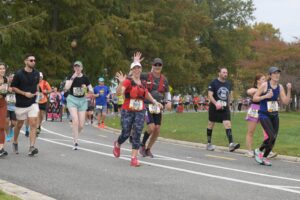
Then we are headed towards the Lincoln Memorial where we will make a loop before going back towards the Washington monument on our way to the Capitol.
The Moment Things Went Sideways
Glenn, the doctor, looks down at his watch and realizes his heart rate was over 175 beats a minute. (a.k.a. too high for the effort)
We extended our walking interval for a few more minutes to see if he could get it to come down.
It did, but very slowly. So we walked some more.
By the time we reached Mile 18, we had been doing more walking than running and his heart rate was still higher than ideal for starting to run again.
It was warm and we had been watching people left and right end up on the curb, either with heat stroke or injuries, or in the worst case scenario we heard about later, cardiac arrest 😱
Neither one of us was going to be one of those people. We were going to finish this happy and healthy.
This is why paying attention to your heart rate at different efforts is so important. So you know what IS and is NOT normal for you.
Glenn encouraged me to go on because he didn’t want to slow down my race, but that wasn’t the plan. We set out to do it together so we would just move on to Plan B, which meant more walking to keep heart rate under control.
Another Kind of Heart Rate Issue
We walked in front of the Capitol and I looked down at my watch. I had the opposite issue of Glenn and my heart rate had dropped low. Like back to cool down low.
We make the turn to head back along Independence Avenue on our way towards the 14th St. Bridge and Crystal City, the last big chunk of the race.
We start to run again and my legs feel like lead. They had started cooling down and now I had asked them to pick it up – for 8 more miles!
This is when I realized, “I have to take him up on his offer. I have to go ahead without him.”
Adjusting Plans (Again) Mid-Race
We stuck together until we got to Mile 19 and told our family the plan. He needed to focus on his heart rate and I needed to do what was best for mine to get BOTH of us to the finish without issues.
I worked back to a pace that felt comfortable (or at least as comfortable as one can be at that mile marker) and hit a FANTASTIC groove👊🏻
Despite the heat. Despite the direct sunlight for 2+ miles. Despite the elevation changes.
I felt in my zone as I picked off racers one after another.
Truthfully, it’s odd to be the only one running when everyone else is walking. It also makes me feel SO GOOD about my fueling for the days before and during the race.
I could keep running. I could even push a little.
I kept looking at my heart rate, staying aware of the fact that I was in direct sun (a.k.a. heat), still running hills, and still had miles to go – all things that would push it higher with the same running effort as in the shade with flat roads.
Because of my training I knew that I could hold a tempo pace with my heart rate in orange for an hour. That’s all I needed. One hour of hard work and I’d be at the finish line.
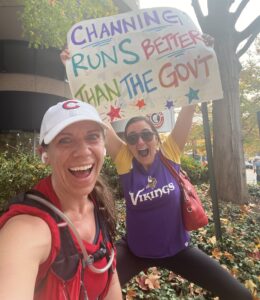
How I (Safely) Pushed It
Miles 20 through 23 that mileage pace was so much faster than I had anticipated. I had shaved multiple minutes off of our per-mile pace and felt great —or at least as great as one can be at those mile markers of a marathon.
The whole time, I kept looking at my watch to ensure my heart rate stayed in the “pushing” zone and not the “danger” zone.
Around Mile 21 a fireman had connected the truck’s hose to a nearby hydrant. I took FULL ADVANTAGE and ran right under that sucker.
The result? A delightful refreshment and a drop in my heart rate.
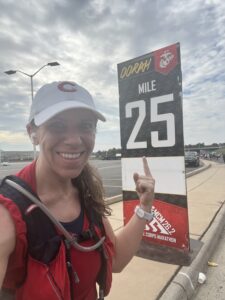
By Mile 25 I was ready to be done. I took a pic at the marker sign and sent it to my brother as a heads up that I’d be done in 10 minutes or less.
As much as I wanted to be finished with the race at this point, I knew I had to get closer to the finish before I could really push it and sprint. So I resumed my pace and kept plodding along, one foot in front of the other.
Then came the final challenge: a steep hill at Mile 26.1 that would take me to the finish line and an opportunity to SIT. (Yes, I am that marathoner who crosses the line, grabs my bevs and sits down as soon as I am able. Yes, I also always need a boost to get back up.)
“Short and quick. Short and quick,” I chanted to myself as I climbed the hill.
Shorter stride + quick turnover = safely scaling elevation without losing momentum.
I scaled the hill and hit the gas as I turned right to the finish line and took two bottles of water from the hands of a handsome Marine.
The Takeaway
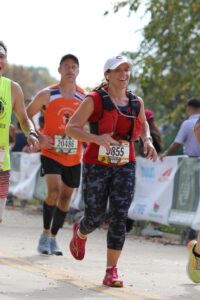 Had I not listened to my body, or Glenn to his, I could have easily ended up as one of those people on the side of the road. Being unable to finish a race would be heartbreaking for sure, but the bigger issue is the physical toll it would take and the unknown of that.
Had I not listened to my body, or Glenn to his, I could have easily ended up as one of those people on the side of the road. Being unable to finish a race would be heartbreaking for sure, but the bigger issue is the physical toll it would take and the unknown of that.
As much as I love a marathon, it’s never about a single run or race. Having my eyes always on the long-term running goals means I can finish with a smile on my face and live to race another day.
I take pride in hitting EVERY finish line, no matter the time on the clock. Because guess what? Crossing that finish line makes you a marathoner no matter the time.
Done is done and 100% a reason to celebrate. Listen to your body so you can live to run (and race) another day.

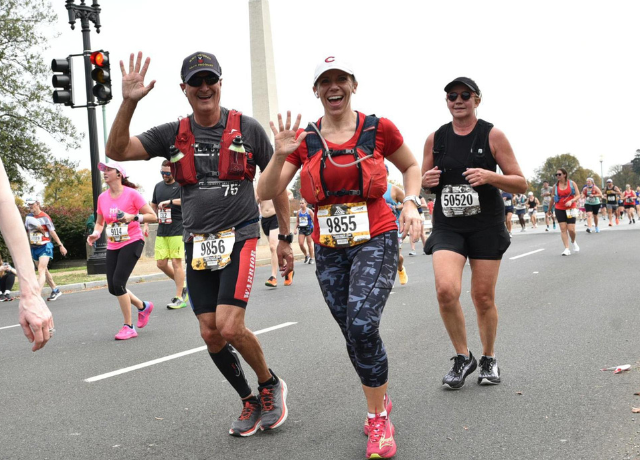
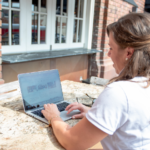
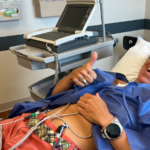
Comments are closed.